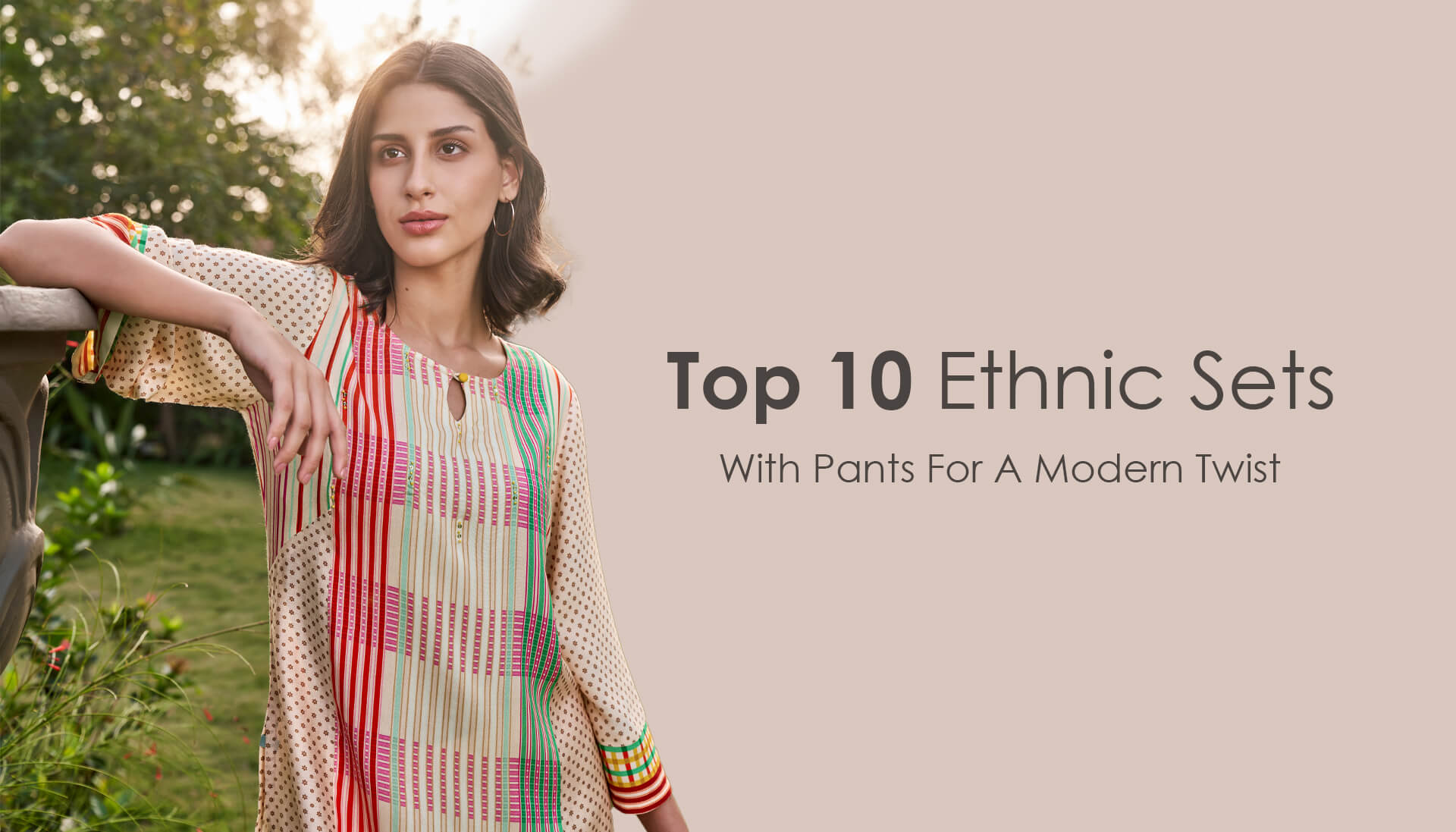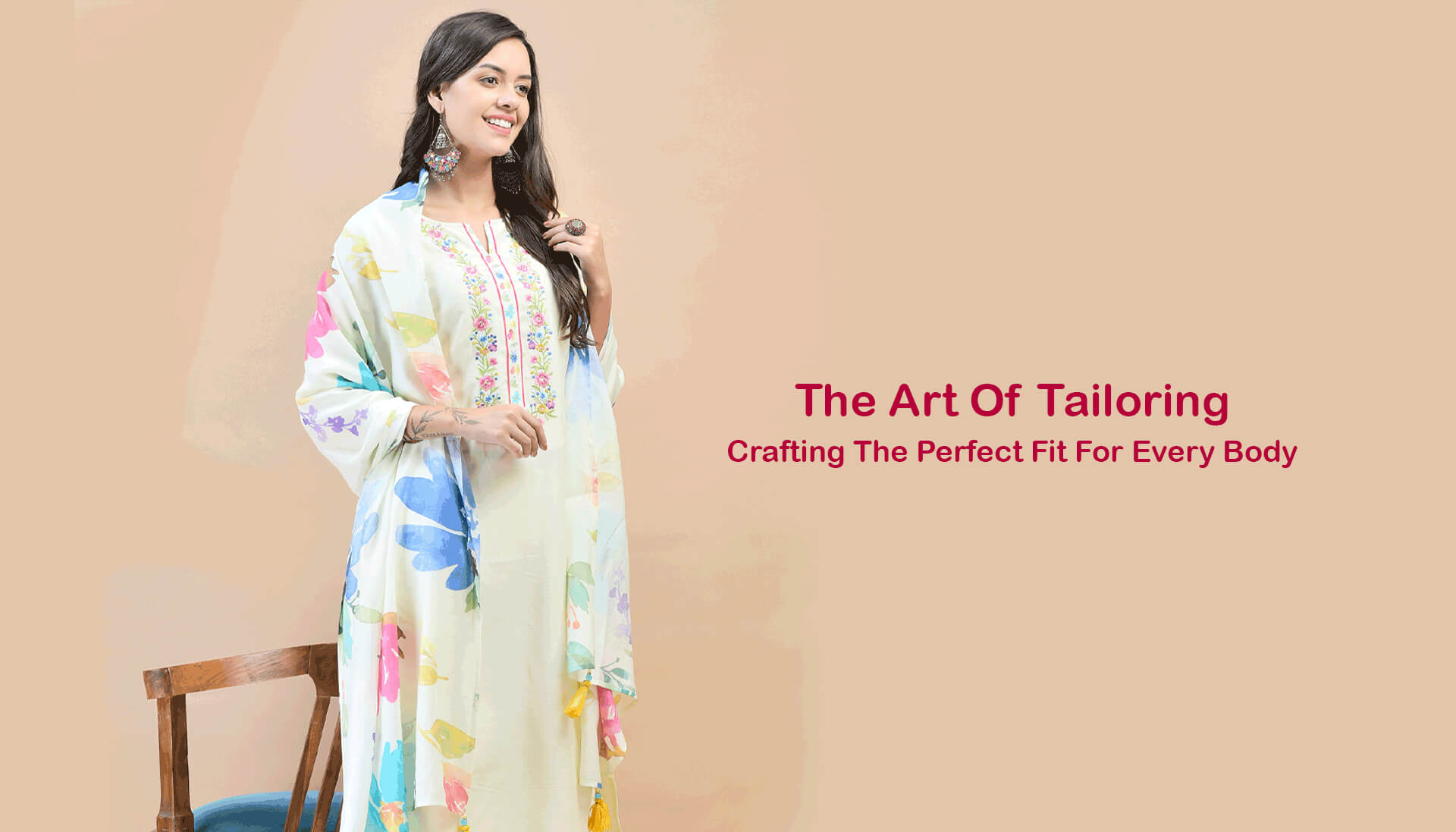The Evolution Of Ethnic Wear: From Tradition To Modern Trends
We have always had a particular place in our hearts for ethnic clothing. It's more than just clothing; it's a reflection of our cultural heritage, identity, and values. From traditional attire steeped in history to contemporary styles that blend tradition with modernity, ethnic wear has undergone a fascinating evolution. This journey from the past to the present showcases how ethnic wear has adapted to changing times while preserving its essence.
The Roots of Ethnic Wear
Ethnic wear has deep roots in various cultures around the world. Each region has its unique traditional attire that represents its customs, beliefs, and way of life. In India, for instance, the saree, salwar kameez, and lehenga are iconic symbols of Indian fashion. The saree, with its origins dating back to the Indus Valley Civilization, is a versatile garment that has been worn by women across generations. Its draping styles vary from region to region, each telling a different story.

Similarly, in Japan, the kimono has been a staple of traditional Japanese clothing for centuries. Its intricate designs and patterns are often influenced by nature, seasons, and historical events. The kimono is an artwork that takes talent and accuracy to make; it's more than just a garment.
The Influence of Colonialism and Globalization
The impact of colonialism and globalization on ethnic wear cannot be overstated. During the colonial era, traditional attire often underwent significant changes. In India, British colonial rule introduced Western clothing styles, which influenced Indian fashion. The fusion of Western and Indian elements led to the creation of garments like the Indo-Western dress, which combines traditional Indian embroidery with Western silhouettes.
Globalization further accelerated the blending of cultures. As people traveled and migrated, they brought their traditional clothing with them, influencing fashion in their new homes. This cross-cultural exchange gave rise to innovative designs that incorporated elements from different cultures, creating a truly global fashion landscape.
The Revival of Ethnic Wear
Despite the influence of Western fashion, there has been a strong resurgence of interest in ethnic wear in recent years. The urge to celebrate heritage and reestablish a connection with one's cultural roots is what's fueling this comeback. Fashion designers and enthusiasts are now embracing traditional garments and giving them a contemporary twist.

In India, the revival of handloom and handcrafted textiles has played a crucial role in the resurgence of ethnic wear. Designers are working closely with artisans to create pieces that showcase traditional craftsmanship while appealing to modern sensibilities. This not only supports local artisans but also ensures that traditional techniques are preserved for future generations.
The evolution of ethnic wear in the modern era is marked by several key trends. These trends highlight how traditional attire is being reimagined to fit contemporary lifestyles.
Fusion fashion is one of the most prominent trends in modern ethnic wear. It involves blending traditional elements with Western styles to create unique and stylish outfits. For example, a traditional kurta can be paired with jeans, or a saree can be draped in a more modern, experimental style. This fusion allows individuals to express their cultural identity while staying fashionable and comfortable.
- Sustainable Ethnic Wear
Sustainability is a growing concern in the fashion industry, and ethnic wear is no exception. There is a rising demand for eco-friendly and sustainable clothing options. Designers are now focusing on using organic fabrics, natural dyes, and ethical production methods. This trend not only promotes environmental consciousness but also supports traditional artisans and their crafts.

- Minimalist Ethnic Wear
Minimalism has made its way into ethnic fashion as well. Modern ethnic wear often features clean lines, subtle embroidery, and simple silhouettes. This minimalist approach appeals to those who prefer understated elegance and versatility in their wardrobe. A minimalist ethnic outfit can be easily dressed up or down, making it suitable for various occasions.
- Gender-Neutral Ethnic Wear
The concept of gender-neutral fashion is gaining traction, and ethnic wear is embracing this trend too. Traditional garments are being redesigned to be more inclusive and accessible to all genders. For instance, the kurta, which was traditionally worn by men, is now being designed in styles that can be worn by anyone, regardless of gender. This shift promotes inclusivity and breaks down traditional gender norms in fashion.

- Tech-Infused Ethnic Wear
Technology is making its mark on ethnic wear as well. From 3D-printed jewelry to smart textiles, innovation is transforming traditional attire. Designers are experimenting with tech-infused fabrics that offer comfort and functionality. For example, sarees with moisture-wicking properties or lehengas with LED lights are some of the innovative creations that blend tradition with technology.

The Role of Celebrities and Influencers
Celebrities and influencers play a significant role in shaping fashion trends, and ethnic wear is no exception. When a popular celebrity dons a traditional outfit, it often sparks a trend. Bollywood celebrities, in particular, have a substantial influence on ethnic fashion in India. Their choice of attire at events and on social media platforms sets the tone for what is considered fashionable.
Influencers on platforms like Instagram and YouTube also contribute to the popularity of ethnic wear. They showcase how traditional garments can be styled in modern ways, providing inspiration to their followers. This visibility helps to keep ethnic wear relevant and exciting for younger generations.
The Future of Ethnic Wear
The future of ethnic wear looks promising, with a continued emphasis on preserving tradition while embracing innovation. As more people become aware of the importance of sustainable and ethical fashion, the demand for handcrafted and eco-friendly ethnic wear is likely to grow. This shift will support artisans and promote the use of traditional techniques.
Additionally, the trend of fusion fashion will continue to evolve, offering endless possibilities for creativity and self-expression. As technology advances, we can expect to see even more innovative designs that blend tradition with modernity.
In conclusion, the evolution of ethnic wear from tradition to modern trends is a testament to the enduring appeal of cultural heritage. Ethnic wear has the unique ability to connect us to our roots while allowing us to express our individuality in a rapidly changing world. As we look to the future, it is essential to celebrate and preserve the rich history of ethnic wear while embracing the exciting possibilities that lie ahead.
FAQs
- What is ethnic wear?
Ethnic wear refers to traditional clothing that represents the cultural heritage and customs of a specific region or community. Examples include sarees, salwar kameez, lehengas in India, and kimonos in Japan.
- How has ethnic wear evolved over time?
Ethnic wear has evolved by incorporating elements from various cultures due to colonialism and globalization. Traditional attire has been adapted to modern styles, resulting in fusion fashion that blends traditional and contemporary elements.
- What is fusion fashion in ethnic wear?
Fusion fashion in ethnic wear involves combining traditional garments with Western styles. For example, pairing a kurta with jeans or draping a saree in an experimental style to create a unique and fashionable look.
- Why is there a resurgence of interest in ethnic wear?
There is a resurgence of interest in ethnic wear due to a desire to reconnect with cultural roots and celebrate heritage. Additionally, the revival of handloom and handcrafted textiles has made ethnic wear more appealing to modern sensibilities.
- How is sustainability influencing ethnic wear?
Sustainability is influencing ethnic wear by promoting the use of eco-friendly fabrics, natural dyes, and ethical production methods. This trend supports environmental consciousness and helps preserve traditional crafts.
- What are some modern trends in ethnic wear?
Modern trends in ethnic wear include fusion fashion, sustainable clothing, minimalist designs, gender-neutral garments, and tech-infused textiles. Tradition and modernity are blended together in these trends.
- How do celebrities and influencers impact ethnic fashion trends?
Celebrities and influencers impact ethnic fashion trends by showcasing traditional garments in stylish and modern ways. Their choices at events and on social media platforms often set the tone for what is considered fashionable.
- What is the significance of handloom and handcrafted textiles in ethnic wear?
Handloom and handcrafted textiles are significant because they showcase traditional craftsmanship and support local artisans. These textiles are often unique and eco-friendly, adding value to ethnic wear.
- Can ethnic wear be minimalist?
Yes, ethnic wear can be minimalist. Modern ethnic outfits often feature clean lines, subtle embroidery, and simple silhouettes, appealing to those who prefer understated elegance and versatility.
- What does gender-neutral ethnic wear mean?
Gender-neutral ethnic wear refers to traditional garments redesigned to be inclusive and accessible to all genders. For instance, kurtas, traditionally worn by men, are now styled in ways that can be worn by anyone.
- How is technology influencing ethnic wear?
Technology is influencing ethnic wear through innovations like 3D-printed jewelry, smart textiles, and tech-infused fabrics. These advancements offer comfort, functionality, and new aesthetic possibilities for traditional garments.
- What is the future of ethnic wear?





